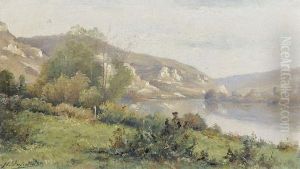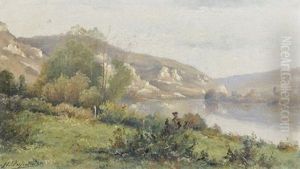Abel Jean Henri Dufresne Paintings
Abel Jean Henri Dufresne was a French artist known primarily for his work as a portrait painter. He was born on January 19, 1788, in Paris, France, during a period of great social and political change that preceded the French Revolution. Dufresne's early life and artistic training coincided with a time when the art world was undergoing significant transformation, influenced by the shifting political landscape and the emergence of new artistic movements.
Dufresne studied under prominent artists of his time, which helped him develop a style that blended traditional techniques with the evolving tastes of the 19th century. Although not as widely recognized as some of his contemporaries, Dufresne contributed to the art scene with his portraits, which were appreciated for their elegance and attention to detail.
Throughout his career, Dufresne exhibited his work at various salons and received a degree of acclaim for his ability to capture the likeness and character of his subjects. His portraits often featured members of the French bourgeoisie and nobility, reflecting the social hierarchy and cultural interests of his era.
Dufresne's work is characterized by the use of smooth brushwork and a subtle palette, which allowed him to create lifelike and refined images. He was skilled in portraying fabrics and textures, which added a sense of realism to his portraits. His approach to portraiture was typical of the period's neoclassical influences, with an emphasis on clarity, harmony, and the idealization of the human form.
Abel Jean Henri Dufresne died on April 13, 1865, in Paris. His legacy as an artist may not be as prominent as some of his peers, but his contributions to portrait painting remain a part of the rich tapestry of French art history. Today, his works can be found in various art collections and museums, where they continue to be studied and appreciated by art enthusiasts and historians alike.


